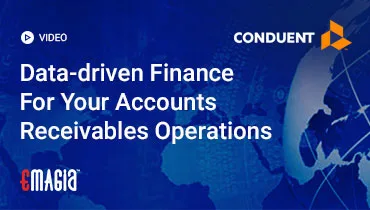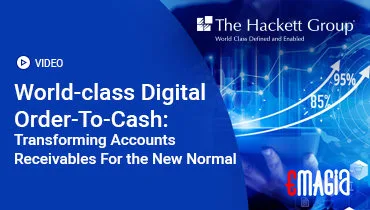The Great Communication Shift: From Manual to Intelligent
In the modern business landscape, the sheer volume of communications can be overwhelming. From customer inquiries and sales follow-ups to critical financial documents and internal memos, the flow is endless. For many years, managing this deluge has been a manual, time-consuming, and error-prone process. However, we are now at the cusp of a significant transformation, moving beyond simple mail merges and scheduled emails to something far more powerful: advanced correspondence automation.
This isn’t just about sending automated replies. It’s about creating an intelligent, integrated ecosystem that understands context, customizes content, and manages communication with precision and efficiency. This guide will explore this paradigm shift, delving into the core components, profound benefits, and practical applications of this transformative technology.
The Evolution of Business Correspondence
To truly appreciate the power of today’s solutions, we must first look at where we’ve been.
- The Age of Manual Correspondence: Think of the days when every letter was typed, every envelope was addressed by hand, and every document was filed physically. This was a process built on human effort, which meant it was slow, expensive, and susceptible to mistakes. A single typo in an address could mean a lost payment or a missed opportunity.
- The Dawn of Basic Automation: Early forms of automation introduced simple tools. Mail merge, for example, allowed for the mass personalization of documents. Email marketing platforms enabled scheduled broadcasts. These tools were revolutionary for their time, but they were largely one-way and lacked the intelligence to adapt to real-time changes or recipient behavior. They were about broadcasting, not about communicating.
- The Rise of Intelligent Systems: The current generation of technology leverages sophisticated tools like artificial intelligence (AI), machine learning (ML), and natural language processing (NLP). These systems can learn from past interactions, understand the nuances of a request, and generate context-aware, hyper-personalized communications. This is the difference between sending a generic late payment notice and sending a personalized email that references a specific conversation and offers a tailored payment plan.
Core Components and Foundational Principles
At its heart, advanced correspondence automation is a layered system built on several key technological pillars. Understanding these components is crucial to leveraging its full potential.
- Intelligent Data Ingestion: The process begins with data. Unlike simple systems that rely on a single spreadsheet, modern solutions can pull information from a multitude of sources. They ingest data from ERPs (Enterprise Resource Planning), CRMs (Customer Relationship Management), and other financial systems like SAP. This data isn’t just imported; it’s understood. The system can recognize data fields, classify document types, and extract relevant information with remarkable accuracy.
- A Robust Rules Engine: This is the brain of the operation. The rules engine uses a set of predefined logic to make decisions in real-time. For example, a rule might state: “If an invoice is 30 days past due, and the customer’s credit score is above a certain threshold, send a polite email reminder. If their credit score is low or they have a history of non-payment, escalate the issue by sending a more formal letter to the collections department.” This ensures that communication is always appropriate and targeted.
- Dynamic Document Generation: Instead of static templates, these systems generate documents on the fly. They pull the correct data points—like a customer’s name, account balance, or a specific product detail—and populate a template. This ensures every piece of correspondence is not only accurate but also uniquely tailored to the recipient. This capability is vital for maintaining a consistent brand voice while still providing a personalized touch.
- Multi-Channel Delivery: Gone are the days of choosing between email, fax, or mail. Today’s systems can deliver correspondence across multiple channels based on recipient preference or internal policy. A single workflow can send a critical invoice via email, a proof of delivery via a secure portal, and a formal legal notice via physical mail, all automatically.
The Unparalleled Business Advantages
The benefits of implementing a sophisticated correspondence system extend far beyond simple efficiency gains.
- Elevated Operational Efficiency: By automating repetitive and manual tasks, businesses free up their employees to focus on more strategic work. This allows a team of collections analysts, for instance, to spend less time on routine follow-ups and more time on complex cases that require a human touch. This shift in focus drives significant productivity increases.
- Significant Cost Reduction: Manual processes are not only slow; they’re also expensive. Printing, postage, and the labor hours spent on document handling add up quickly. By digitizing and automating these workflows, companies can realize substantial savings in both direct and indirect costs. The reduction in errors alone can prevent costly rework and financial losses.
- Enhanced Financial Accuracy and Control: With an automated system, the risk of human error is dramatically reduced. The system ensures that the correct information is always pulled from the source of truth, minimizing discrepancies in invoices, statements, and other financial documents. This leads to more accurate records and a cleaner financial picture.
- Improved Customer Experience: Timely, accurate, and personalized communication is the cornerstone of great customer service. When a customer receives a prompt, clear response to their inquiry or a perfectly timed account statement, it builds trust and loyalty. This attention to detail creates a positive perception of your business and can be a key differentiator in a competitive market.
- Unassailable Compliance and Security: In regulated industries like finance, healthcare, and insurance, compliance is non-negotiable. Automation ensures that all communications adhere to a strict, auditable process. It provides a comprehensive history log of every single piece of correspondence sent, along with the details of who it was sent to and when. This creates a secure, tamper-proof record that is essential for audits and regulatory scrutiny.
Practical Applications in a Modern Business
The applications of this technology are vast and transformative, touching every part of an organization.
- Finance and Accounts Receivable: This is one of the most impactful areas. Imagine a system that automatically generates and sends invoices, sends payment reminders based on pre-set schedules, and even creates a comprehensive audit trail for every transaction. This level of automation can significantly lower a company’s Days Sales Outstanding (DSO), directly improving cash flow.
- Human Resources: From employee onboarding to benefits enrollment and performance reviews, HR generates a mountain of correspondence. An automated system can ensure every new hire receives the correct welcome packet, every employee gets a timely reminder about open enrollment, and all performance feedback is properly documented and delivered.
- Legal and Regulatory Compliance: For legal departments, automating document creation and correspondence can be a lifesaver. This includes generating contracts, sending formal notices, and managing case-related communications. The system ensures that every document uses the most up-to-date language and is sent to the correct parties, reducing legal risk.
- Supply Chain and Logistics: In a complex supply chain, communication is constant. Automated systems can manage correspondence with vendors, send shipping notifications to customers, and provide real-time updates on orders. This transparency and efficiency help build stronger relationships across the entire supply chain.
Implementing a System for Success
Integrating a new system is more than just installing software; it’s a strategic initiative that requires careful planning and execution.
- Define Clear Objectives: Before you do anything else, understand what you want to achieve. Are you aiming to reduce costs, improve customer satisfaction, or enhance compliance? Having a clear goal will guide your entire implementation strategy.
- Begin with a Pilot Project: Don’t try to automate everything at once. Start with a single, manageable process, like invoice reminders or a specific customer notification. This allows your team to learn the new system, identify potential challenges, and demonstrate early wins that will build momentum for the broader rollout.
- Train and Empower Your Team: Your employees are your most valuable asset. A new system will only be successful if they are on board and well-trained. Provide thorough training, explain the “why” behind the change, and show them how the new system will make their jobs easier and more rewarding. Address any concerns about job security directly and transparently.
- Integrate with Existing Infrastructure: To get the most out of automation, it must integrate seamlessly with your current software. The ideal solution will be able to connect with your ERP, CRM, and other core business applications to create a single, unified source of data. This prevents data silos and ensures consistency across all departments.
- Measure and Optimize: Implementation is not a one-time event. Continually measure the system’s performance against your initial objectives. Track key metrics like response times, error rates, and customer feedback. Use this data to refine your rules, optimize your workflows, and ensure you are getting the best possible return on your investment.
How a Modern Solutions Provider Can Help
The right technology partner can make the difference between a challenging implementation and a seamless transition. A strong provider should offer:
- A platform with a robust, configurable rules engine.
- The ability to integrate with your existing ERPs and financial systems.
- Out-of-the-box templates and the flexibility to create custom ones.
- Comprehensive reporting and analytics to track performance.
- Expert support to guide you through every step of the process, from initial planning to ongoing optimization.
A Strong Future is Built on Smart Communication
The future of business is digital, and the future of digital is intelligent. As organizations continue to face increasing volumes of data and communication, the need for sophisticated automation will only grow. The systems of tomorrow will be even more intuitive, predictive, and integrated, using machine learning to anticipate needs and create truly proactive communication strategies. Embracing this technology today is not just about staying competitive; it’s about positioning your business for long-term growth and success.
Frequently Asked Questions About Correspondence Automation
What is the difference between basic and advanced correspondence automation?
Basic automation uses simple triggers and templates to send generic communications. Advanced systems use AI and machine learning to understand context, personalize content, and integrate with multiple data sources to drive intelligent, multi-channel communication workflows.
How can automation help reduce costs?
By eliminating manual tasks, reducing errors, and digitizing documents, automation significantly lowers operational expenses. It also reduces the need for physical materials like paper and postage, leading to both direct and indirect cost savings.
What are the biggest challenges to implementation?
Common challenges include integrating with legacy systems, managing data quality, and getting employee buy-in. To overcome these, it’s crucial to have a clear strategy, start with a small pilot, and provide thorough training.
Can automation be used in small businesses?
Absolutely. While large enterprises may use it on a massive scale, even small businesses can benefit from automating key processes like invoicing, customer follow-ups, and marketing campaigns. The principles and benefits are scalable to any size organization.
How does it handle compliance and security?
A well-designed system ensures that every communication follows a pre-defined, auditable process. It creates a secure log of all sent correspondence, guaranteeing that you meet regulatory requirements and can provide a full audit trail whenever needed.



